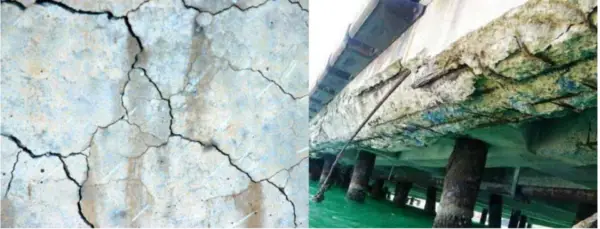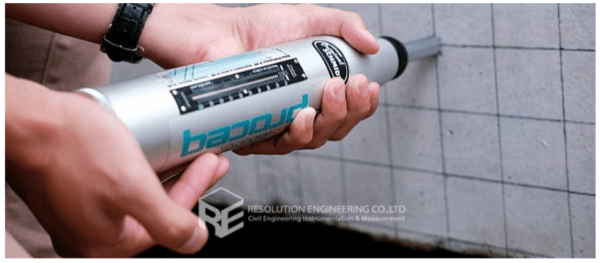Concrete curing is a critical yet often overlooked aspect of concrete construction. Using the proper concrete curing techniques and compounds allows for increased concrete strength and durability.
This comprehensive guide covers everything you need to know about specifying, applying, and maintaining concrete curing compounds.
What is Concrete Curing Compound?
Concrete curing compound, also referred to as concrete curing sealer, is a liquid membrane-forming compound that is applied to fresh concrete surfaces.
Curing compounds work by controlling the rate at which water evaporates from the concrete during the initial hardening or curing process.
Proper concrete curing is vital for:
- Achieving optimal strength
- Reducing cracks and permeability
- Improving wear and abrasion resistance
- Minimizing effects of freeze-thaw cycles
Concrete curing compounds allow concrete to properly hydrate and harden through the retention of mixing water and hydration moisture.
They effectively seal in moisture for water retention levels that produce superior quality concrete surfaces.

Types of Concrete Curing Compounds
There are two major types of curing compound based on their chemical composition:
Water-Based Concrete Curing Compounds
Water-based or wax-based concrete curing compounds use paraffin or polyethylene wax emulsified in water as the curing action mechanism. They are:
- Low odor
- Easy cleanup
- VOC-compliant
However, wax-based compounds break down over time so they provide a less effective moisture seal on exterior flatwork.
Resin-Based Curing Compounds
Resin-based curing compounds use hydrocarbon resins dissolved in a solvent carrier that evaporates after application. They are:
- More durable
- Provide longer-lasting protection
- Effective on exterior flatwork
But resin-based compounds have stronger odor and require hydrocarbon solvent cleanup.

Other distinguishing factors between types of compounds include solids content, dissipation rates, and compatibility with various flooring systems. Always verify compatibility and compliance for your specific concrete application.
Properties of Concrete Curing Compounds
There are several important properties and specifications to evaluate when selecting an appropriate concrete curing compound:
- Solids Content – The higher the % of solids, the lower the permeability and the more effective the moisture retention
- Dissipation Rate – The expected timeframe for the film to breakdown without affecting later finishes
- VOC Content – Ensuring compliance with local regulations
- Reflectivity – Compounds include special reflectant pigments to further reduce heat gain
Other considerations are drying time, solvent base, and texture modifiers that enhance spread rate. Consult technical specifications before purchase and application.
Process of Application of Curing Compound
Applying liquid curing compound properly is imperative to realizing its full benefits:
- Application Timing – Apply as soon as final finishing is complete and surface water has dissipated. This critical window is typically 20-60 minutes after pouring and finishing concrete
- Application Method – Spray on with a low pressure airless sprayer with consistent overlapping strokes
- Coverage Rates – Typical rates are 150-200 sq ft per gallon to achieve proper film thickness
- Removal and Reapplication – If compound was applied too early or rain falls, wash it off and reapply when surface is dry
Care should be taken to apply compound on horizontal surfaces uniformly without puddling. Proper spray equipment, timing, coverage, and technique are essential.
Uses of Concrete Curing Compounds
Concrete curing compound has become an indispensable chemical agent for almost all concrete construction applications, including:
- Slabs and Foundations – Interior/exterior, residential/commercial slabs on grade
- Structural Elements – Columns, beams, walls
- Pavements – Roads, highway medians, runways, taxiways
- Architectural Concrete – Decorative concrete, colored concrete
Curing compounds provide critical moisture retention for properly curing almost all concrete surface types while minimizing labor and improving constructability.
Proper curing is most critical for concrete flatwork that will be exposed to freeze-thaw service conditions in outdoor environments.
Concrete Curing Compound Specification Requirements
Specifiers must establish acceptance criteria, testing protocols, and quality assurance plans for evaluating compliance:
- Moisture Retention – Sample testing via ASTM C156 water retention capacity
- Reflectance Testing – For reflective pigmented compounds per ASTM E903
- Composition Standards – ASTM C309 specification conformity
Field quality tests may involve film thickness measurement, water immersion testing, and visual inspection after damage. Strict adherence to manufacturer, ASTM, and project specifications is required.
Best Concrete Curing Compound for Driveways
When choosing the ideal concrete curing compound for residential or commercial driveways, key parameters include:
- High Solids Content – Minimum 30% solids for driveways and heavy traffic
- Reflective Pigments – Reduces heat gain in concrete for exterior slabs
- Low VOC, Water-Based – For code compliance and indoor air quality
The best concrete curing compound products for driveways also offer enhanced abrasion resistance and protection against deicing chemical exposure. This ensures long-lasting durability across freeze-thaw cycles.
Using Concrete Curing Compound on New Concrete
Curing compound should only be applied to newly poured concrete once it has hardened sufficiently to prevent marring during application. Check concrete surface for readiness by touching with a finger ‒ there should be no visible indentation.
Before applying curing compound:
- Allow sheen from water dissipate
- Ensure proper concrete finishing is complete
- Cover all adjacent surfaces for overspray protection
Maintain consistent spray overlap during application then inspect film coating uniformity when dry.
Concrete Curing Compound Application Rate
Typical application rates for concrete curing compounds range from 150-200 square feet per gallon. Variances depend on:
- Concrete texture
- Surface porosity
- Material manufacturer specifications
Heavily broomed or textured concrete requires more product to achieve proper film thickness. Always verify correct coverage rate based on product specifications for your particular application.
Higher 20% application rates are recommended for exterior flatwork while lower 15% rates are suitable for smooth architectural concrete. Adjust and monitor flow rate to optimize efficiency.
Concrete Curing Compound Temperature Range
Concrete curing compounds can be applied in ambient air temperatures ranging from 40°F to 100°F depending on product type. Consult technical specifications for permitted temperature minimums and maximums during application and curing.
If applied outside these limits, the moisture retention film may be compromised. Avoid frost or frozen conditions at all times when applying compounds.
Optimal concrete curing will occur between 50°F and 90°F. Supplemental external curing protection is recommended when temperatures drop below 50°F in the 72 hours after compound application.
Can You Apply Curing Compound in the Rain?
Curing compounds should never be applied to damp, wet, or rained-upon concrete surfaces. Water on the slab will cause poor bonding and non-uniform coverage.
However, light mists may still allow proper film formation per manufacturer guidance. If in doubt, wait for concrete to fully dry then reapply compound.
If rain falls after initial application on drying concrete, wash off compound then reapply when surface moisture dissipates. Verify bonding, coverage uniformity, and retention efficiency.
Concrete Curing Compound Dissipation Time
The dissipation or removal time for concrete curing compounds depends on product type but is typically 30-90 days after initial application. Dissipation indicates the film has broken down enough to apply tile adhesives, floor coverings, or sealants.
Moisture retention properties will continue blocking evaporation even as the film dissipates. Always confirm appropriate dwell times before applying finishes or other products.
More porous concrete and warmer weather may accelerate breakdown while cooler temps or smooth concrete prolong film lifetimes. Consult manufacturer dissipation schedules.
Removing Concrete Curing Compound from Concrete
If concrete curing compounds need to be removed before scheduled dissipation:
- Allow concrete to properly cure, typically 7 days
- Sand down film via power orbital sanding with 60-80 grit pads
- Alternately, water blasting above 5,000 psi may lift film
- Full removal confirmed when water beads with no hydrophobic rejection
Harsh chemical strippers are generally not required. Ensure curing compound is fully removed before applying tile adhesives or resinous coatings directly to the concrete.
Concrete Curing Compound VOC Compliance
Concrete curing compounds must meet local VOC regulations based on federal, state, and municipal codes. These dictate permissible VOC levels and exemptions:
- U.S. EPA 40 CFR 59 ‒ National Volatile Organic Compound Emission Standards for Consumer and Commercial Products. National VOC limit of 350 g/L covering compounds sold as concrete curing compounds.
- CARB SCAQMD 1168 ‒ California Air Resources Board rule 1168. Sets more restrictive VOC limit of 350 g/L in California. Further tightened to 100 g/L for Southern California counties.
- AIM VOC Regulations ‒ Paint and coatings industry guidelines help manufacturers ensure compliance.
Low VOC concrete curing compounds contain less than 100 g/L VOCs. Products with higher VOCs may still be used as concrete curing and sealing compounds based on product usage exemptions for surface sealers.
Cost of Concrete Curing Compound per Square Foot
Typical costs for concrete curing compound range from $1 to $3 per gallon. Most standard products cost $2 per gallon on average when purchased full strength in bulk quantities.
Using median coverage guidance:
- 150 sq ft per gallon ‒ $2 per gallon ÷ 150 sq ft = $0.013 per square foot
- 200 sq ft per gallon ‒ $2 per gallon ÷ 200 sq ft = $0.01 per square foot
Custom blends containing reflective pigments, high solids, or other enhancements may increase costs by 25-50%.
Always account for wasted product from equipment cleaning and overspray when estimating project quantities for costing accuracy.
Conclusion
Specifying, applying, and maintaining concrete curing compounds properly delivers substantial benefits for both plastic and hardened concrete properties.
Concrete curing compounds retain mixing water, ensure sufficient cement hydration, reduce permeability, increase abrasion resistance, and minimize freeze-thaw damage during the critical concrete curing phase.
Understanding best practices around composition, selection, usage procedures, and parameters allows construction professionals to leverage these indispensable chemical agents for durable, high-quality concrete outcomes across all application types.
With the foundational knowledge provided in this all-encompassing guide, any architect, engineer, contractor, finisher, inspector or owner can confidently specify, apply, test, and validate concrete curing compounds for infrastructure integrity.







